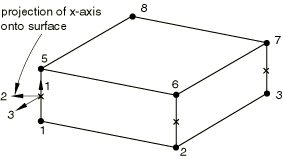Motivation for Gasket Elements
Gaskets are constructed in many ways and from many materials. Some types of gaskets consist of several layers of preformed metal, possibly with thin elastomeric coatings or elastomeric inserts (see Figure 1). Others use plastics together with elastomeric inserts.

Gaskets are usually very thin and act as sealing components between structural components. They are carefully designed to provide appropriate pressure-closure behaviors through their thickness (the thin direction of the gaskets) so that they maintain their sealing action as the components undergo deformations due to thermal and mechanical loads. It is difficult to use solid continuum elements to model the through-thickness behavior of gaskets with the material library available. Therefore, Abaqus/Standard offers a variety of gasket elements that have through-thickness behaviors specifically designed for the study of gaskets.
The gasket behavior models are separate from the models in the material library and assume that the thickness-direction, transverse shear, and membrane behaviors are uncoupled (see Defining the Gasket Behavior Directly Using a Gasket Behavior Model for details). For a gasket behavior that is not readily addressed by these special behavior models, such as occurs when coupled behaviors or through-thickness tensile behavior must be considered, Abaqus/Standard provides a versatile alternative by allowing a gasket element to use either a built-in or user-defined material model (see Defining the Gasket Behavior Using a Material Model for details).



